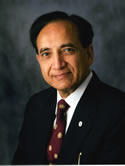Nomograms for preoperative prediction of prognosis in patients with oral cavity squamous cell carcinoma Journal Article
| Authors: | Montero, P. H.; Yu, C.; Palmer, F. L.; Patel, P. D.; Ganly, I.; Shah, J. P.; Shaha, A. R.; Boyle, J. O.; Kraus, D. H.; Singh, B.; Wong, R. J.; Morris, L. G.; Kattan, M. W.; Patel, S. G. |
| Article Title: | Nomograms for preoperative prediction of prognosis in patients with oral cavity squamous cell carcinoma |
| Abstract: | BACKGROUND This study sought to develop prognostic tools that will accurately predict overall and cancer-related mortality and risk of recurrence in individual patients with oral cancer based on host and tumor characteristics. These tools would take into account numerous prognosticators beyond those covered by the traditional TNM (tumor-node-metastasis) staging system. METHODS Demographic, host, and tumor characteristics of 1617 patients with cancer of the oral cavity, who were treated primarily with surgery at a single-institution tertiary care cancer center between 1985 and 2009, were reviewed from a preexisting database. Recurrent disease was recorded in 509 patients (456 locoregional and 116 distant); 328 patients died of cancer-related causes, and 542 died of other causes. The median follow-up was 42 months (range, 1-300 months). The following variables were analyzed as predictors of prognosis: age, sex, race, alcohol and tobacco use, oral cavity subsite, invasion of other structures, comorbidity, tumor size, and clinical nodal status. The stepdown method was used to select the statistically most influential predictors for inclusion in the final nomogram for each outcome of interest. RESULTS The most influential predictors of both recurrence and cancer-specific mortality probability (CSMP) were tumor size, nodal status, subsite, and bone invasion. Nomograms were generated for prediction of overall survival (OS), CSMP, and locoregional recurrence-free probability (LRRFP). The nomograms were internally validated with an overfit-corrected predictive discrimination metric (concordance index) for OS of 67%, CSMP of 66%, and LRRFP of 60%. CONCLUSIONS Nomograms have been developed that can reasonably estimate OS, CSMP, and LRRFP based on specific tumor and host characteristics in patients with oral cancer. © 2013 American Cancer Society. |
| Keywords: | head and neck cancer; nomogram; oral cancer; oral cavity cancer; survival prognosis; predictive tools; outcome prognosis; recurrence prognosis |
| Journal Title: | Cancer |
| Volume: | 120 |
| Issue: | 2 |
| ISSN: | 0008-543X |
| Publisher: | Wiley Blackwell |
| Date Published: | 2014-01-15 |
| Start Page: | 214 |
| End Page: | 221 |
| Language: | English |
| DOI: | 10.1002/cncr.28407 |
| PROVIDER: | scopus |
| PUBMED: | 24399417 |
| DOI/URL: | |
| Notes: | Export Date: 3 February 2014 -- CODEN: CANCA -- Source: Scopus |
Altmetric
Citation Impact
BMJ Impact Analytics
MSK Authors
Related MSK Work












